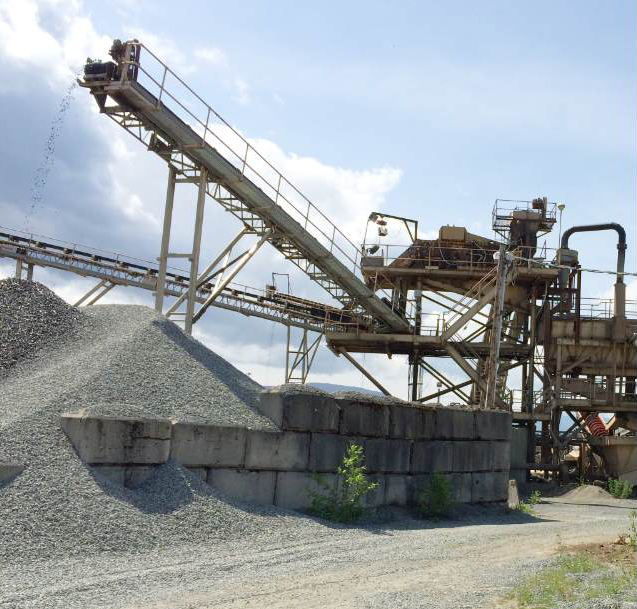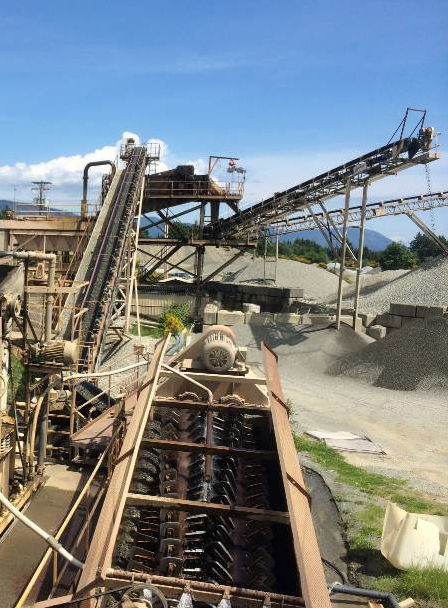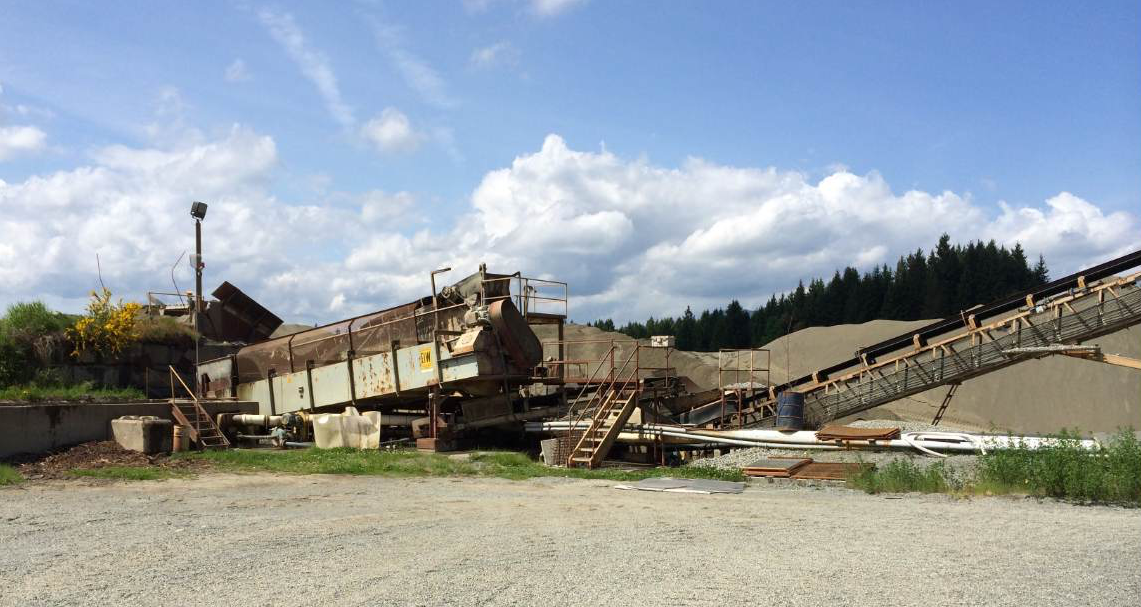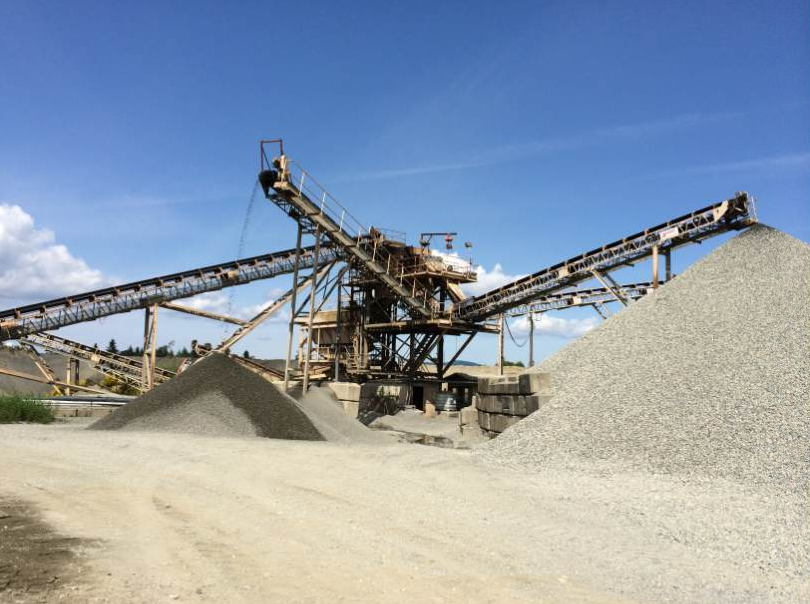Wash What You Convey
BY KPI-JCI, Astec Mobile Screens

Butler Brothers Supplies tests spiral shaft design for washing, moving aggregate material
Seeking out replacement parts that aren’t genuine factory replacement parts can be a risky move if producers don’t prioritize quality. But for Lloyd Gerbrandt, manager of Butler Brothers Supplies in Duncan, B.C., retrofitting a competitive manufacturer’s parts into his washing equipment translated into less maintenance, more uptime, reduced wear and improved performance.
Butler Brothers Supplies is a family-owned, Canadian aggregate producer that has been serving the South Vancouver Island area with aggregate and other services since the early 1940s. Its main aggregate depot, located in Duncan, supplies 65 different products, including limestone and granite. The company owns two log washers to scrub 3-inch minus material and two KPI-JCI and Astec Mobile Screens fine material washers to scrub and dewater sand products, in addition to a number of KPI-JCI and Astec Mobile Screens products, including a classifier tank and feed conveyor.

Getting aggregate clean from Point A to Point B is a little easier now that Butler Brothers Supplies has installed a spiral shaft design for the paddles in the log washer, basically making it a whole new piece of equipment.
With 20 years of use in the log washer, Gerbrandt knew it was time to replace the machine’s worn logs. But the problem wasn’t contained to just wear parts. The log washer was situated on the ground on a steel framework and concrete foundation, and the excessive vibration from the log washer continually cracked the steel and concrete, meaning constant repairs.
Gerbrandt had been intrigued for some time by the spiral shaft design on KPI-JCI and Astec Mobile Screens’ log washer, which uses spiraling shafts with overlapping paddles to produce the scrubbing action. When it came time to look for replacement parts, Gerbrandt went directly to Lonetrack Parts, Inc., his authorized KPI-JCI and Astec Mobile Screens dealer, and began the process of retrofitting the logs into the old unit.
“I wanted the steady flow that comes with the spiral design,” he said. “…With the spiral design, you get an even, steady pull.”

Many OEMs set their paddles at 90-degree angles on the shaft. The result is that their paddles hit the material, lift it and drop it onto the next paddles. That leads to a significant amount of shock to the paddle tips, bearings and drive assembly, as well as power surges and peaks, which create a need for more horsepower per ton per hour, according to Jeff Wendte, product manager for washing and classifying with KPI-JCI and Astec Mobile Screens.
KPI-JCI and Astec Mobile Screens’ spiral shaft design means the paddles are continuously in the material and the material is always being scrubbed. There is no lift and drop action, so the unit uses less energy.
“When compared to competitive units with an in-line paddle configuration, the unique reverse involution spiral paddle configuration found in our Series 8000 log washers reduces shock loading of the logs, bearings, stub shafts and the tank,” Wendte said. “This does several things. It increases the service life of the unit, reduces power peaks and valleys resulting in less horsepower and more tonnage produced, increases retention time, which improves the scrubbing action achieved, and reduces wear on the individual components.”
As soon as the spiral shaft design was retrofitted, Gerbrandt said he noticed an immediate difference.
“The first thing I noticed was how smooth it ran,” he said.

Although Gerbrandt had some reservations whether the new spiral shaft could clean the material as well, he said there have been “absolutely no issues,” noting that both the cleanliness of the rock and the volume met the company’s expectations.
KPI-JCI and Astec Mobile Screens’ paddle tips are Ni-hard and have corrugated faces. They feature Ni-hard edges for scrubbing action and long life.
Ryan Newman, director of parts for KPI-JCI and Astec Mobile Screens explained, “Our paddles are also adjustable; as the tips become worn, they can be adjusted out, which further extends the life of the paddle.”
On top of the improved performance of the log washer, Gerbrandt said it was also imperative for the company to do business with a North American manufacturer.
“Butler Brothers Supplies prioritizes buying local, then Canadian, then North American,” Gerbrandt said. “We are very adamant about buying something completely manufactured in North America when available.”
Gerbrandt recalled an experience several years ago, when the company was looking to replace a sand screw and was approached by other dealers with offshore units.
“It was substantially cheaper to purchase offshore,” he said.“But we went with the North American brand because we know how important it is to support North American manufacturing.
“If we don’t support our North American businesses, soon there will be nothing left to protect,” he added.
Pricing is undoubtedly an important consideration for producers when it comes to equipment and particularly replacement parts, according to Don Rand, parts manager for Lonetrack Parts. But to make an operation most profitable, the most critical consideration should always be quality, he said.
“Right now, there are replacement parts of lesser quality out there,” Rand said. “Sometimes the prices are so far below market price that it does take away business, but the customer then has to deal with those consequences – downtime, reduced production, increased maintenance or worse.”
Those are consequences Gerbrandt is glad he can avoid.
“I expect we’re going to get a longer life on our electric motor, and our gears and our drive assembly will last substantially longer because there is way less stress on it,” he said. “We just love that we don’t have to worry about any problems with it.”
Newman said he’s seen other customers like Gerbrandt, who quickly become converts to the spiral shaft design and continue to retrofit the one-of-a-kind design into other log washers in their operations after installing the first.
“There are significant cost savings the customer can realize with the spiral shaft design,” he said. “Extended service life, reduced energy consumption, cleaner rock and more tonnage produced – these are all things that directly impact the customer’s bottom line.”
